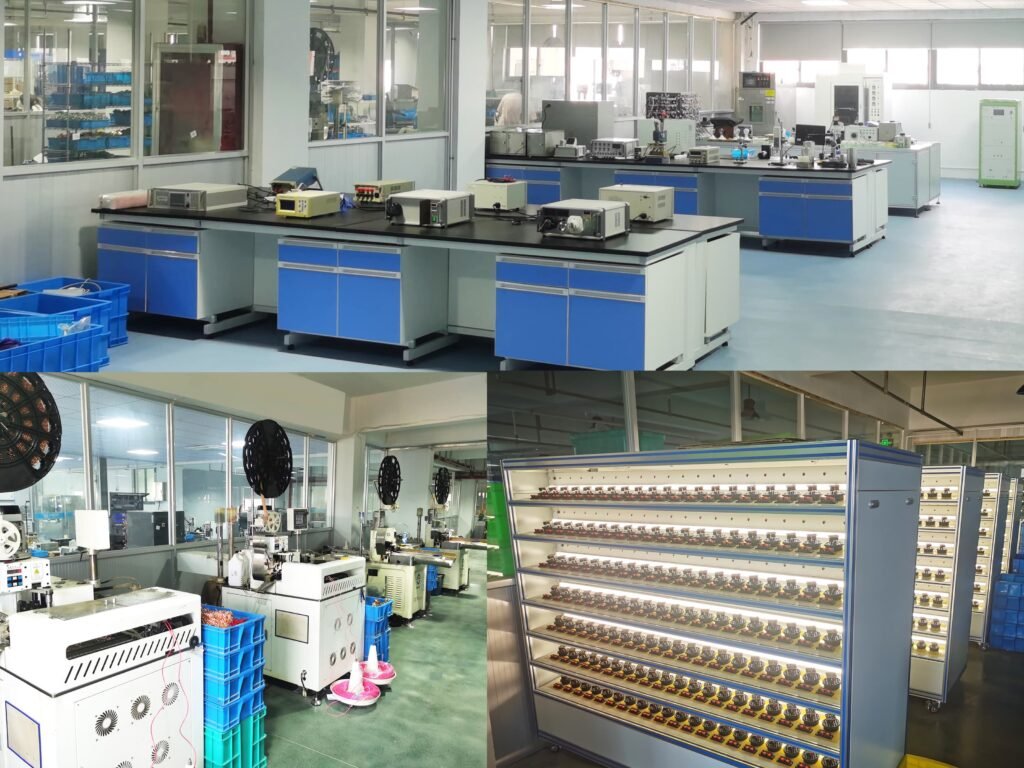Choosing the Right Photocell
Outdoor lighting is no longer just about putting a bulb in a fixture, with the fast adoption of LEDs, lighting systems ask for reliable control methods that balance energy efficiency, durability, and smart functionality. A key part of that puzzle is the photocell.
But here’s the catch: not all photocells are the same. They come mainly in two categories: electromagnetic and electronic. Each has its strengths and weaknesses, and best-use scenarios. Selecting between them directly impacts LED lighting control, fixture longevity, and energy savings.
This article offers a photocell performance comparison that breaks down the two technologies, explains their applications, and provides selection guidance using Lead-Top’s proven product line.
Electromagnetic Photocells
Electromagnetic photocells are the classic dusk-to-dawn controllers. They have been widely used for decades and remain a reliable choice for many applications. Built with a bimetallic strip or thermal relay, these devices physically respond to light changes.
Pros of Electromagnetic Photocells
- Rugged, mechanical design makes them highly robust in demanding conditions.
- Fast response times, often less than 1 second for certain models.
- High load capacity, making them suitable for powering large fixtures.
- Straightforward, low-cost installation with little technical complexity.
Cons of Electromagnetic Photocells
- Limited programmability; they typically offer fixed dusk-to-dawn switching.
- Lower surge protection compared to advanced electronic controllers.
- May experience shorter lifespans in areas with unstable voltage.
Best Applications
Electromagnetic photocells shine in rural or industrial streetlights, where simplicity, ruggedness, and fast switching are valued over programmability. They’re often preferred in places with basic dusk-to-dawn control needs and limited demand for “smart” functionality.
Recommended Product Models
LT164: Twist-lock Electromagnetic Photocell
- Rated: 120–277V, applicable 105–305V
- Load: 1000W / 1800VA
- Response time: <1s
- IP66, optional IP67
- Fail mode: ON
- Temperature range: -40°C to +70°C

LT154E: High-Voltage Long-Life Electromagnetic Photocell
- Rated: 347–480V, applicable 277–528V
- Load: 1000W / 1800VA
- Surge protection: MOV 640J, upgradeable to 1280J
- IP66, optional IP67
- Turn-off delay: 3–6s
- 10-year warranty
- Fail mode: OFF

Key Takeaway
The LT164 is great for medium-power systems if speed and load capacity are your preference, For high-voltage grids or crucial infrastructure, the LT154E offers long-life reliability along surge protection. Together, these models give both fast-response needs and heavy-duty applications.
Electronic Photocells
Electronic photocells represent the modern evolution of dusk-to-dawn lighting technology, using solid-state components, they sense light with precision and integrate seamlessly with LED lighting control systems.
Pros of Electronic Photocells
- Precise dusk-to-dawn switching with programmable Lux thresholds.
- High surge protection for modern LED drivers.
- Flexible integration with LED, HID, and fluorescent systems.
- Options for advanced features like zero-cross detection.
Cons of Electronic Photocells
- Slightly higher cost compared to electromagnetic versions.
- Sensitive to extreme power surges without proper surge protection.
Best Applications
Electronic photocells are the top choice for urban streets, commercial facilities, and smart lighting projects where precision and adaptability matter more than simplicity. They are preferred in dusk-to-dawn sensor selection for cities deploying IoT or connected infrastructure.
Recommended Product Models
LT124 / LT124L: Economical Electronic Models
- Works with LED, HID, and fluorescent fixtures
- Solid-state driver compatibility
- MOV surge protection: 160J

LT134: Long-Life Electronic Model
- 8-year warranty
- Zero-cross detection and programmable settings
- Surge protection: 640J
LT154: Heavy-Duty Electronic Model
- 10-year warranty
- Surge protection: 1280J
- Wide voltage range: 120V–277V
Key Takeaway
Electronic photocells give programmability, precision, and surge durability, making them great for smart lighting environments. Whether it’s dimming schedules, compliance with municipal lighting rules, or IoT integration, these models enable advanced control, electronic models contribute to energy efficiency goals. By decreasing false triggers and supporting dimming integration, they help municipalities cut operational expenses while meeting green building or smart city standards, in short, they are not just photocells, they are enablers of modern lighting ecosystems.
Selection Guidelines
When evaluating electromagnetic vs electronic photocells, here’s a structured way to decide:
| Criteria | Electromagnetic Photocells | Electronic Photocells |
| Switching Speed | <1s (fast response) | 3–6s (programmable) |
| Load Handling | High load capacity | Moderate to high load |
| Surge Protection | Moderate | High (up to 1280J) |
| Programmability | Limited | Full options |
| Cost | Lower | Slightly higher |
| Best Applications | Rural/industrial, basic dusk-to-dawn | Smart cities, programmable, LED-focused |
Practical Guidelines
- Choose electromagnetic photocells for basic, rugged, high-load rural installations where fast response matters
- Choose electronic photocells for urban or smart projects needing programmable thresholds and advanced control
- Always check voltage compatibility, IP rating, surge protection level, and operating temperature before purchase
- For ongoing outdoor lighting troubleshooting, electronic versions give more flexibility and resilience, especially in LED systems
Selecting the right photocell is not just about comparing specifications; it’s about matching technology with the environment.
For example, a highway lighting contractor may prioritize reliability and quick replacement, making electromagnetic models more practical, in contrast, a smart city project manager overseeing thousands of fixtures will go for programmability and remote control, where electronic photocells deliver more benefits.
Another factor is geographic climate, in coastal or high-humidity regions, photocells face more stress from moisture and salt corrosion, electronic models with robust IP66/IP67 sealing and stronger surge protection often outperform traditional designs in such conditions. Conversely, in dry, low-maintenance rural areas, electromagnetic photocells are a cost-effective solution without unnecessary complexity.
Ultimately, the decision should weigh application scale, environmental stress, and long-term costs, by aligning photocell type with these factors, lighting professionals can make sure of dependable, efficient, and standards-compliant installations.
Conclusion
When comparing electromagnetic vs electronic photocells, the differences may seem technical, but the impact on performance, reliability, and project costs is significant, electromagnetic photocells still has their place in heavy-duty and straightforward lighting environments, while electronic versions are leading the way in urban lighting innovation.
By selecting the right model, even if it’s the rugged LT164 for industrial use or the programmable LT154 for smart urban grids, operators can make sure of optimal energy savings, decreased maintenance, and long-term reliability, understanding this photocell performance comparison is what separates a standard installation from a future-ready, intelligent lighting system, for lighting professionals, the right choice makes sure of safer streets, longer-lasting LEDs, and smarter cities.
Interested in technical datasheets or product samples? Reach out to Lead-Top for tailored dusk-to-dawn sensor selection advice and project support.
References:







